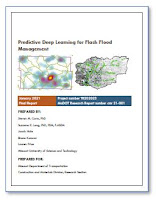The objective of this study was to develop accurate prestressed girder camber calculations and validate them with available data. The project team conducted a thorough literature review and analyzed recent girder camber research efforts in other states. The team collected existing data on 189 Missouri bridge girders as well as field data and cylinder samples from four girders during fabrication. The camber prediction equations and parameters were evaluated and compared to the field data.
The study found that the current prediction method under-predicted the initial camber measured in the field on average by about 25%. However, investigation also found that the field measurements may have had error due to sag in the measurement string line. It was also found that the effect of the overhang (girder length past storage support locations) affects the camber. Temperature effects were found to be another source of camber error. The current camber calculations were modified to include the effect of the girder overhang and a continuous time-dependent prediction of camber. In addition, guidelines for camber measurement were developed. The modifications to the camber prediction reduced the underprediction of camber to less than 4% on average and decreased the variability to within ±25%. The proposed method was implemented into a computer spreadsheet for easy calculation.
Report number: cmr 21-011
Published: December 2021
Project number: TR202101
Authors: Dr. Sarah Orton, Dr. Vellore Gopalaratnam, Ali Elawadi, John Holt, Dr. Maria Lopez, Dr. Thomas Murphy










